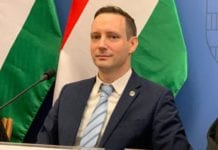By Stefan J. Bos, Chief International Correspondent BosNewsLife, reporting from Budapest

MOSCOW/BUDAPEST (BosNewsLife)– The Russian Orthodox Church enthroned Metropolitan Kirill of Smolensk and Kaliningrad Sunday, February 1, the 16th patriarch of at least an estimated 75 million followers, amid pressures to overcome internal divisions and to reach out to non-Orthodox believers.
Traditional songs reverberated throughout the Cathedral of Christ the Saviour in Moscow during the ceremony. Patriarch Kirill, 62, succeeds Patriarch Alexiy II, who died in December at the age of 79.
He is the first leader of the world’s largest Orthodox church to take office since the collapse of the Soviet Union.
Russian President Dmitry Medvedev and Prime Minister Vladimir Putin were among thousands of people who attended the ceremony, a far cry from the days of Communism when Sovjet leaders discouraged church life.
Even the Cathedral of Christ the Saviour cathedral, where the gathering took place, is seen as a symbol of post-Soviet revival. The vast structure is a reconstruction of a 19th-century cathedral that was dynamited in 1931 under Soviet dictator Joseph Stalin.
CONCERNS REMAIN
Yet despite church renewal, Patriarch Kirill, who was already in charge of foreign contacts, will still face difficult tasks, including reaching out to other believers, said Ioann Kadar, a Russian-Orthodox priest in Budapest.
Yet, Kirill is viewed by insiders as a “supporter of modernization.” That is music to the ears of Kadar who says the church is going “through a period of revival”.
Although Hungary was long occupied by Russian troops, he says even Hungarians are now joining the Russian Orthodox Church. “I think this enemy feeling had more to do with anger over the Soviet Union occupation that with angry feelings towards Russians,” Kadar told BosNewsLife.
“MOTHER CHURCH
But he believes the “mother church” in Moscow should do more for Orthodox believers living outside Russia. “In the beginning of the 1990s they were busy with ressuracting the Russian Orthodox Church on the ashes of atheism. There were perhaps 6,000 church buildings and 16 monasteries in Russia and Ukraine. Now there are only in these neighboring countries some 30.000 churches and 800 monasteries.”
In other Eastern European countries that number is increasing as well. “The mother church should reach out to them,” Kadar added.
Reaching out is also crucial to overcome divisions, said Roman Lunkin, head of the Religion and Law Institute of the Russian Academy of Science in Moscow. “He will now have to count with separatists in Ukraine and traditional movement who view him as being to modern.”
Kadar don’t want him to stop there. “I think it is also important to improve relations with non-Orthodox churches including Catholics as well as Protestant churches, including for instance Reformed denominations but also with Baptist and [other] evangelical churches,” he stressed.
FUELING TENSIONS
He accused “local authorities” in Russia of fueling historic tensions between the Russian Orthodox Church and the growing number of free churches and groups, who have often complained of discrimination and harassment.
Christopher Hill, an influential Orthodox priest of the Russian Orthodox Church outside Russia, said Kirill should see other believers as his friends. “He will look upon Roman Catholics and traditional Protestants as allies in the battle against secularism and growing materialism,” Hill added.
However Kadar cautioned it was crucial for Kirill not to overlook Biblical priorities. “Now is the time for a deeper revival, and a more personal relationship with God.”
Kirill has made clear he wants to popularize church life, as just one in ten Russians are regular church goers, according to estimates.








